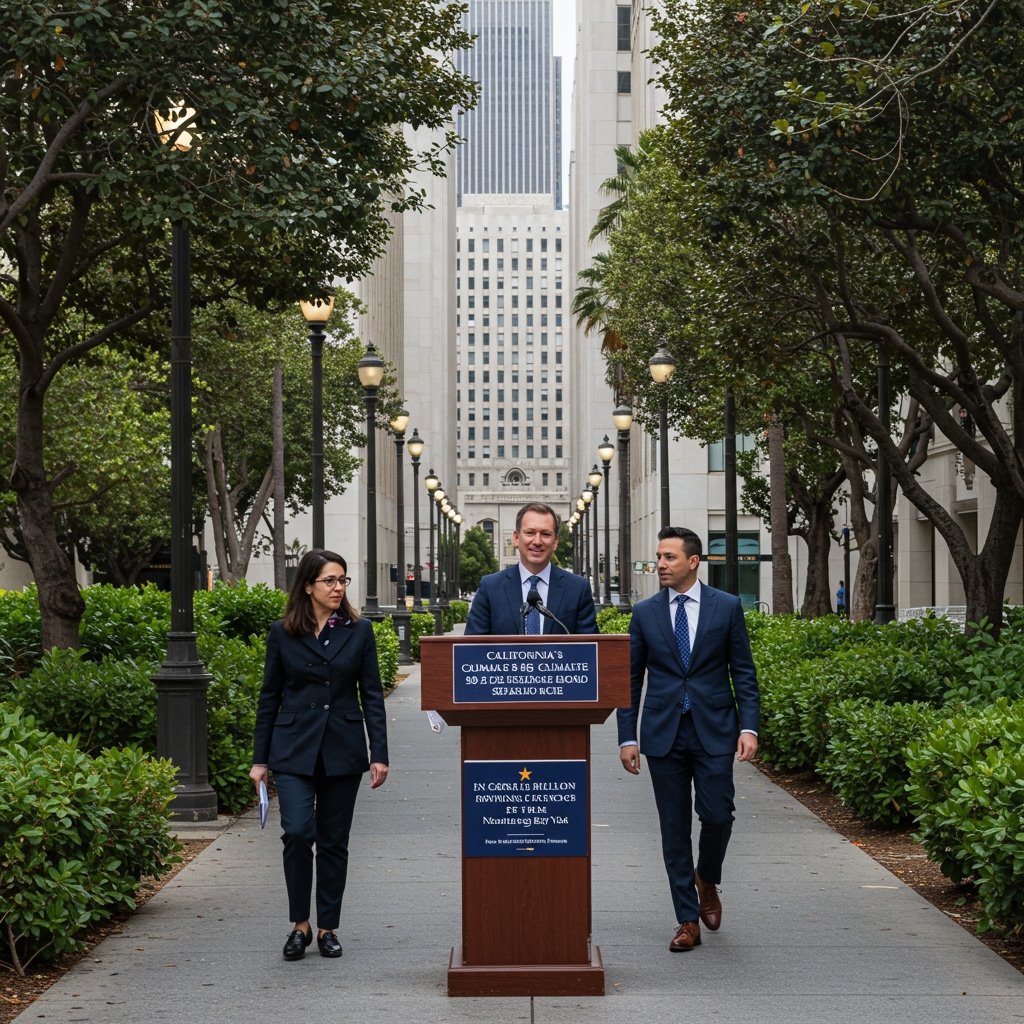California Legislators Push Forward Ambitious $15 Billion Climate Resilience Bond
SACRAMENTO, CA — California lawmakers are accelerating progress on a significant legislative initiative aimed at bolstering the state’s defenses against the escalating impacts of climate change. Senate Bill 123 (SB 123), a proposed $15 billion climate resilience general obligation bond measure championed by Senator Maria Rodriguez, has cleared crucial legislative hurdles and is now advancing towards a potential floor vote. This development signals growing legislative momentum behind a major state investment strategy focused on enhancing infrastructure and natural systems statewide.
Details of the Proposed $15 Billion Investment
The core purpose of SB 123 is to provide substantial funding for critical infrastructure projects across California designed to increase the state’s resilience to climate-related threats. The $15 billion bond, if approved by voters, would allocate funds to a diverse array of initiatives. Among the key areas targeted are enhanced wildfire defenses, including forest health projects, defensible space programs, and upgrades to vital infrastructure in high-risk fire zones. The bill also prioritizes funding for coastal erosion controls to protect communities and ecosystems threatened by rising sea levels and increasingly volatile storm surges. Furthermore, significant resources are earmarked for modernizing and fortifying the state’s drought-strained water systems, addressing issues ranging from water conservation and storage to improving conveyance infrastructure and preparing for future periods of prolonged drought.
Proponents argue that this comprehensive approach is essential for safeguarding California’s economy, environment, and public safety in the face of increasingly frequent and intense extreme weather events.
Legislative Journey Through Committees
SB 123 has navigated the complex legislative process, successfully clearing key legislative committees this week. This signifies that the bill has garnered sufficient support within these vital initial stages of review. The committee votes followed extensive discussions and testimony from various stakeholders, including state agencies, environmental groups, industry representatives, and taxpayer advocates. The bill’s advancement out of committee indicates a readiness by a majority of legislators on those panels to move the proposal forward for consideration by the full body.
This phase is critical, as it allows for detailed examination of the bill’s provisions, funding allocations, and potential impacts. The successful navigation of these committees demonstrates the strategic efforts by Senator Rodriguez and fellow supporters to build consensus and address questions surrounding the ambitious proposal.
Arguments from Supporters: Investing in the Future
Supporters of SB 123 contend that the proposed $15 billion investment is not just necessary but crucial following the pronounced impacts of recent extreme weather events that have afflicted California. Organizations like Sierra Club California have voiced strong support for the measure, framing it as a proactive and essential step in adapting to the realities of climate change. They argue that the cost of inaction – measured in terms of lives lost, property damage, economic disruption, and environmental degradation from wildfires, droughts, floods, and coastal erosion – far outweighs the cost of the proposed bond.
Advocates emphasize that investing in resilient infrastructure now will save the state considerable resources in the long run by mitigating the severity of future climate impacts. They highlight the job creation potential of the infrastructure projects funded by the bond and the long-term benefits for water security, ecological health, and community safety. The bond is seen as a vital tool to fund projects that are often too large or complex for individual local governments to undertake on their own.
Concerns Raised by Opponents: The State’s Debt Burden
However, the proposal is not without its critics. Groups such as the California Taxpayers Association have expressed significant concerns regarding the state’s existing debt burden. While acknowledging the need for infrastructure improvements, they argue that adding another $15 billion in general obligation bond debt could place undue financial pressure on the state and its taxpayers for decades to come. General obligation bonds are repaid from the state’s general fund, typically through tax revenues, meaning future state budgets must allocate significant resources to debt service.
The California Taxpayers Association and other fiscal conservatives advocate for alternative funding mechanisms or a more cautious approach to incurring new debt. They often call for greater scrutiny of state spending priorities and suggest that existing revenues or smaller, more targeted bond measures might be more fiscally responsible options. Their concerns center on the long-term fiscal health of the state and the potential impact on future state budgets, which need to fund essential services like education, healthcare, and public safety.
The Path Forward to the Ballot
Having cleared its initial legislative hurdles in committee, SB 123 is now anticipated to face a floor vote in the coming weeks or months. Successful passage by both the State Senate and the State Assembly by the requisite majority is necessary for the bill to be placed before voters. If it secures legislative approval, the measure is slated for potential placement on the November 2025 statewide ballot. Placing a bond measure on the ballot requires legislative action and often negotiation to finalize the specific language and scope of the proposal that voters will consider.
The period leading up to a potential floor vote and subsequent ballot placement will likely involve continued lobbying and public discourse as proponents and opponents make their cases. The outcome of the floor vote will be a critical indicator of whether this substantial climate resilience investment proposal will ultimately be decided by California voters next year.
This proposed $15 billion bond represents one of the most significant state-level efforts to proactively address climate change impacts through infrastructure investment, setting the stage for a major policy debate in California’s near future.



















